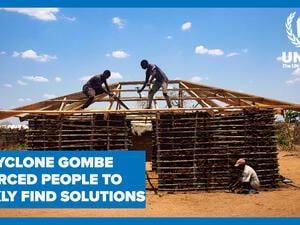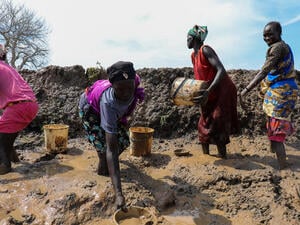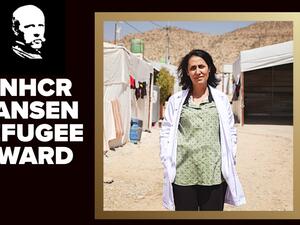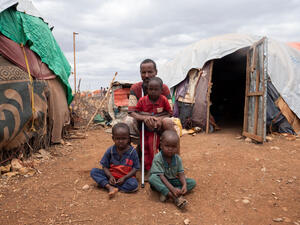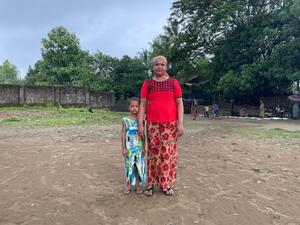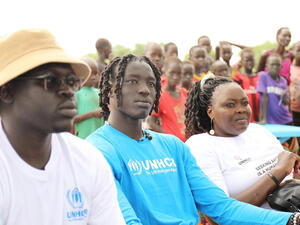UNHCR starts relocating Afghan IDPs under plan to close border camp
UNHCR starts relocating Afghan IDPs under plan to close border camp

Zhare Dasht camp in southern Afghanistan offers income-generating projects, like this peanut factory, for internally displaced Afghans.
SPIN BOLDAK, Afghanistan, July 5 (UNHCR) - The UN High Commissioner for Refugees has begun moving internally displaced Afghans from the town of Spin Boldak on the Pakistani border to the camp of Zhare Dasht, the first step in a process that will see the IDP camp closed by the end of August.
A convoy of 15 trucks on Sunday carried the first 50 families that opted to relocate to Zhare Dasht, a camp for internally displaced persons (IDPs) that was set up two years ago near the main southern Afghan city of Kandahar.
A further two convoys are expected this week and the pace will be stepped up to provide daily movements in subsequent weeks. All assistance to Spin Boldak IDP camp, located in an area where there have been continual security threats, will end on August 31.
Spin Boldak camp was established in late 2001 to shelter Afghans fleeing the war between the Taliban rulers of Afghanistan and US-led forces but who were unable to cross the border into neighbouring Pakistan. Although Pakistan did allow the entry of some 300,000 refugees, many were stuck at the border.
"It was a basically untenable location," said Paul Stromberg, UNHCR's Kabul-based regional coordinator for repatriation to Afghanistan. "We had problems finding water at sustainable depths and it's too close to a border with security concerns.
"As well, many of the IDPs have found livelihoods there. So rather than keep a location where we have had only limited access over the past year, we decided to give the residents an opportunity to move to a better location."
The government of Afghanistan and implementing partners of UNHCR are currently conducting a survey of the 20,000 current residents of Spin Boldak to establish their intentions. The registration, during which residents specify which of four options they are taking, is expected to be completed by the middle of July.
Of 2,500 families so far registered, nearly 20 percent have opted to relocate to Zhare Dasht, which is already housing nearly 40,000 Afghan IDPs. Close to 14 percent requested UNHCR assistance to integrate locally on property they have acquired in Spin Boldak, and only about 2 percent asked for UNHCR help to return to their original homes in Afghanistan. About two-thirds of all residents said they would remain in Spin Boldak when assistance ends and they are no longer considered IDPs.
The convoys to Zhare Dasht are escorted and medical staff screen the arriving IDPs. Sixty tents have been erected at the reception area in case the arrivals have to be housed overnight.
However, UNHCR expects that the IDPs will be processed quickly and will be taken the same day to an area set aside for their longer-term stay. Tents have already been erected in the area set aside for the Spin Boldak IDPs and 24 wells have been rehabilitated, ensuring a supply of drinking water.
At the start of the programme to close Spin Boldak, there were still more than 180,000 IDPs in Afghanistan, mainly in camp-like situations where they receive assistance. Of these, most - 145,000 - were in the south where Zhare Dasht and Spin Boldak are located. There were also 9,000 IDPs in the north, 20,000 in the west, 5,500 in the east and 5,000 in the south-east of Afghanistan.
The steady reduction of the IDP population - UNHCR has assisted 443,000 IDPs to return home since 2002 - has paralleled the massive repatriation of refugees from neighbouring Afghanistan and Pakistan. More than three million Afghan refugees have come home voluntarily since UNHCR began providing repatriation assistance in early 2002.

